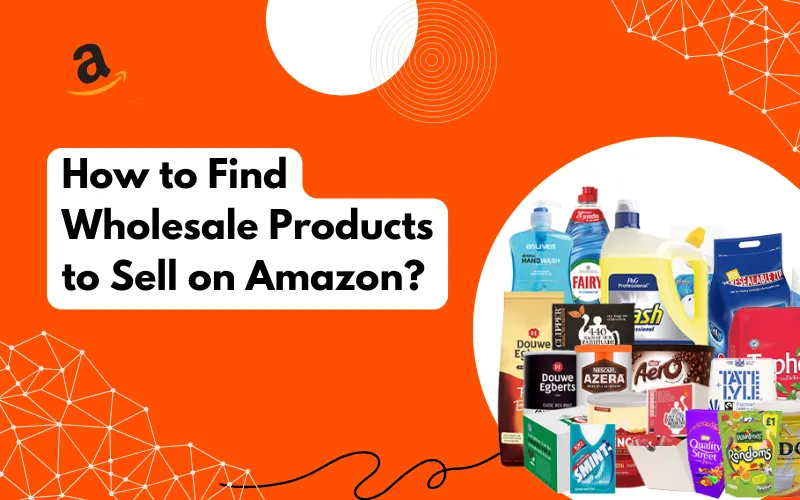How to Find Wholesale Products to Sell on Amazon: A Comprehensive Guide

Selling wholesale products on Amazon is a popular business model, offering a relatively straightforward way to establish a steady income. However, success hinges on your ability to find profitable and reliable wholesale suppliers. This guide will walk you through the process of identifying, evaluating, and sourcing wholesale products to sell on Amazon.
1. Understand the Wholesale Business Model
The wholesale business model involves purchasing products in bulk from manufacturers or distributors at a discounted rate and reselling them individually on platforms like Amazon for a profit. Key benefits include:
- Established Demand: Products are typically already proven in the market.
- Ease of Scaling: Larger inventory allows for higher sales volumes.
- Brand Leverage: Selling well-known products can build trust with customers.
However, competition and thin profit margins are challenges to be mindful of.
2. Research Product Niches
The first step to finding wholesale products is identifying the right niche. Look for products that:
- Have High Demand: Use tools like Jungle Scout, Helium 10, or Amazon’s Best Sellers page to spot trending items.
- Offer Low Competition: Avoid oversaturated markets to reduce price wars.
- Yield Good Profit Margins: Use Amazon’s FBA calculator to estimate potential margins after fees.
Popular niches include electronics accessories, health and beauty products, home improvement items, and pet supplies. Seasonal items can also provide lucrative opportunities.
3. Find Reliable Wholesale Suppliers
Finding trustworthy suppliers is crucial to ensuring consistent product quality and timely delivery. Here are some effective methods:
a. Attend Trade Shows
Trade shows like ASD Market Week and the Canton Fair provide an opportunity to meet suppliers, negotiate deals, and explore product samples in person. Trade shows often showcase the latest market trends, giving you an edge over competitors.
b. Use Online Directories
Platforms like Alibaba, SaleHoo, Worldwide Brands, and ThomasNet connect you with verified wholesale suppliers. These directories often include reviews, making it easier to evaluate supplier credibility.
c. Contact Manufacturers Directly
Reach out to manufacturers of the products you’re interested in. Many manufacturers maintain a list of authorized wholesalers and distributors. Direct sourcing minimizes middlemen, often leading to better prices.
d. Explore Local Suppliers
Local suppliers may offer faster shipping times and the ability to inspect products before purchase. Use directories like Yelp or Google Maps to locate wholesalers in your area.
e. Leverage Online Marketplaces
Websites like Faire and Abound specialize in connecting small businesses with wholesalers. These platforms cater to Amazon sellers and often provide tools to track orders and manage inventory.
4. Evaluate Potential Suppliers
Before committing to a supplier, evaluate them based on:
- Product Quality: Request samples to assess the quality firsthand.
- Pricing: Compare pricing across multiple suppliers to ensure competitiveness.
- Minimum Order Quantities (MOQs): Choose suppliers with MOQs that align with your budget and sales strategy.
- Reliability: Research supplier reviews and ask for references from existing clients.
- Shipping and Lead Times: Ensure the supplier can meet Amazon's shipping and delivery requirements.
A supplier with transparent communication and clear terms is more likely to meet your business needs consistently.
5. Negotiate Deals with Suppliers
Negotiating favorable terms can significantly boost your profit margins. Keep these tips in mind:
- Be Professional: Present yourself as a serious business owner.
- Ask for Discounts: Inquire about bulk discounts or promotions.
- Negotiate Payment Terms: Favorable terms, such as 30-60 days after delivery, can improve cash flow.
- Build a Long-Term Relationship: A strong supplier relationship can lead to priority treatment and better pricing.
6. Analyze Product Viability
Once you’ve identified potential products and suppliers, conduct a thorough viability analysis. Key factors to assess include:
- Amazon Fees: Use the FBA calculator to determine if the product offers adequate margins after fees.
- Sales Velocity: Tools like Jungle Scout or Helium 10 can estimate sales volume and trends for similar products.
- Competitor Analysis: Check the number of sellers for your chosen product. Products with excessive competition may require aggressive pricing strategies.
7. Create a Wholesale Amazon Seller Account
If you’re not already an Amazon seller, you’ll need to set up an account:
- Choose a Professional Selling Plan ($39.99/month) to avoid per-item fees.
- Enroll in Fulfillment by Amazon (FBA) for streamlined logistics, customer service, and Prime eligibility.
Ensure you meet Amazon’s requirements, including providing invoices and supplier documentation when requested.
8. Comply with Amazon’s Policies
Amazon has strict policies regarding wholesale products. Follow these steps to avoid account suspension:
- Sell Legitimate Products: Ensure your suppliers are authorized to distribute the brands you sell.
- Maintain Documentation: Keep invoices and supplier agreements on file as proof of authenticity.
- Avoid Restricted Products: Check Amazon’s list of restricted categories and gated brands before listing products.
9. Scale Your Wholesale Business
Once you’ve established a reliable sourcing and sales process, scaling your wholesale business involves:
- Expanding your product catalog by adding complementary items.
- Diversifying suppliers to reduce risk.
- Investing in marketing strategies like Amazon PPC to boost product visibility.
- Monitoring inventory levels to avoid stockouts.
Automation tools like inventory management software can streamline scaling efforts.
Conclusion
Finding wholesale products to sell on Amazon involves meticulous research, reliable supplier sourcing, and strategic decision-making. By understanding the market, evaluating suppliers, and following Amazon’s policies, you can build a profitable wholesale business. Whether you’re a beginner or an experienced seller, the wholesale model offers immense potential for growth in 2024.
Take advantage of tools, trade shows, and online resources to stay ahead in the competitive Amazon marketplace. With persistence and a well-executed strategy, you’ll be well on your way to achieving success. Follow us for expert tips, insights, and strategies to boost your Amazon success.
